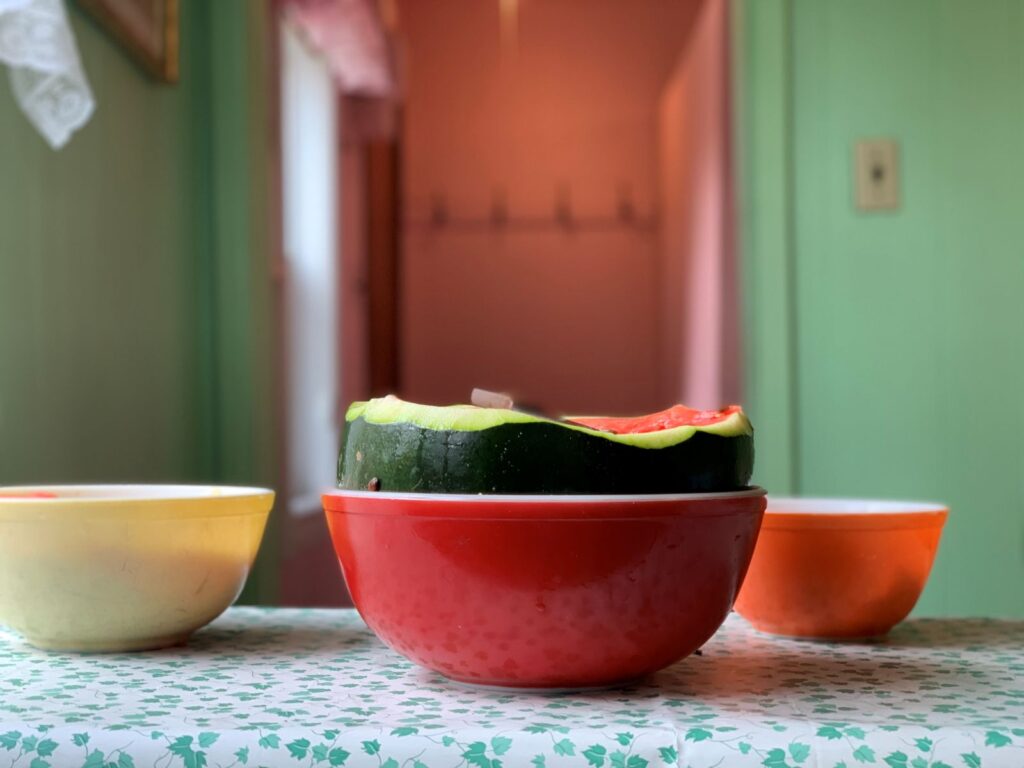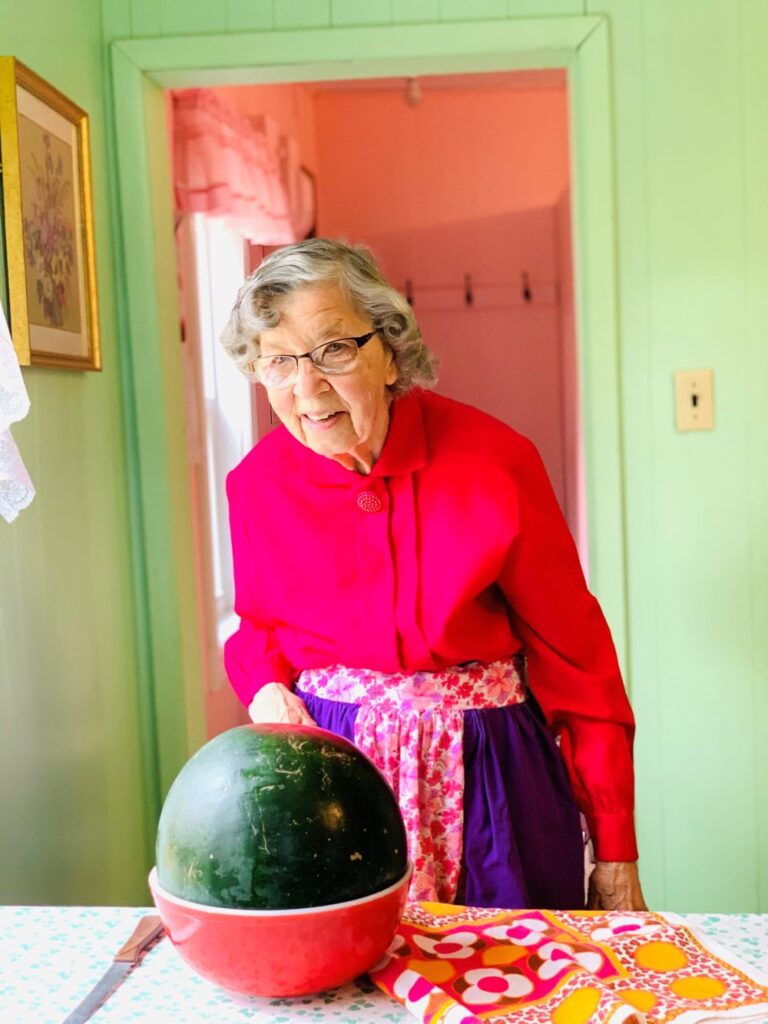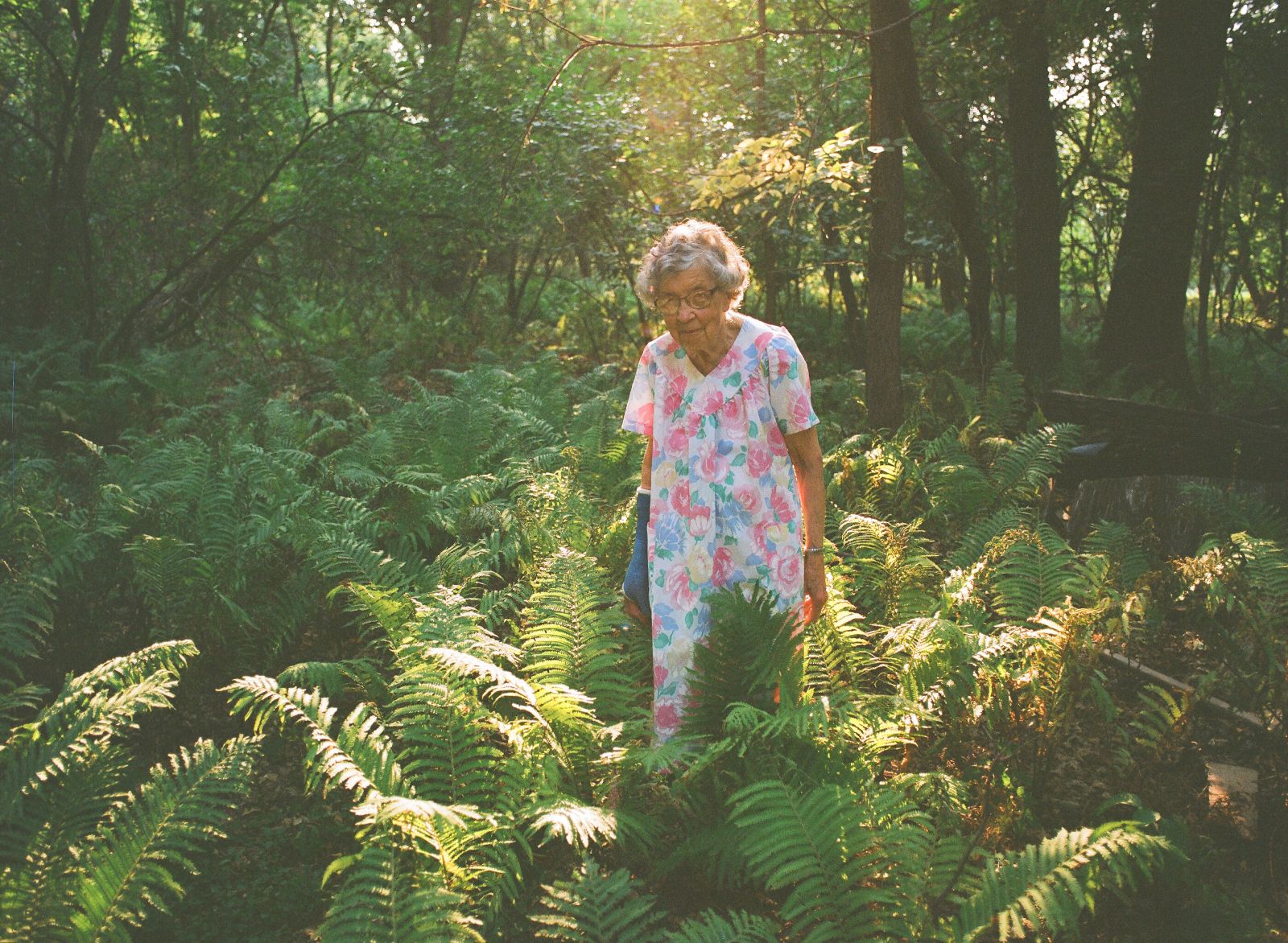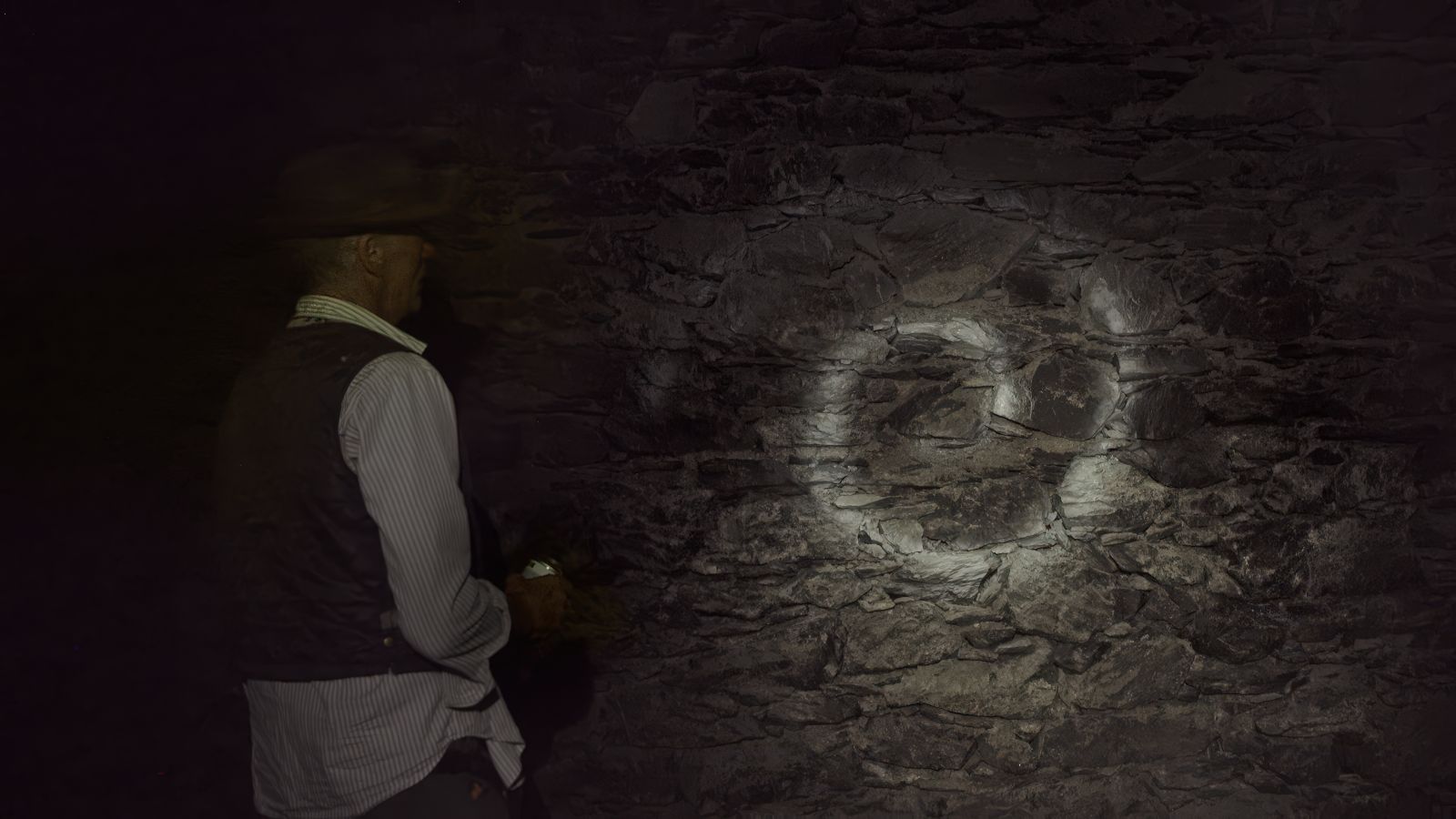In the opening minutes of Agatha’s Almanac, the eponymous subject—director Amalie Atkins’ elderly aunt—confuses the word “tool” with “toy.” It’s a telling slip for a woman like Agatha Bock, who spends her days tending the vast garden surrounding her rural Manitoba home with a degree of care that suggests not only a passion for the work, but an underlying sense of play. Atkins lovingly surveys Agatha’s daily rituals in all their mundane and sublime detail, observing this staunchly independent woman as she strives to preserve the family’s history and way of life through the literal and figurative fruits of her labour. Agatha’s Almanac operates on a parallel plane to its subject, marrying the immediate and the archival.
Agatha strikes a compelling figure: confidently spoken even with a faint vocal quaver, lucid yet endearingly digressive as a raconteur, and utterly eccentric in her stalwart down-to-earthness. Years of bending down to work the land have permanently etched themselves into the curve of her upper back, and a slight edge to her Manitoban timbre carries the faded aural marker of a Ukrainian Mennonite lineage. She wears her perseverance with stubborn nonchalance. We learn that she functioned without running water for ten years, collecting buckets of rain and borrowing from neighbours when necessary, and throughout the film, we see her go about her usual business with one arm in a cast. Windows and cracks on the property are sealed with duct tape (she calls herself the “duct tape queen”), while miscellaneous items are labelled with masking tape: “very noisy fan,” “do not turn on tap,” “very good bucket, 2003,” “property of Agatha Bock,” and so on.
Agatha’s life is a seemingly bottomless fount of quirks, charms and habitual behaviours that simultaneously suggest character and history; both woman and property are seemingly ready-made for quotidian portraiture. An attentive filmmaker could shoot hours upon hours of material with such subtly storied subjects, and this is the exact conundrum that the self-taught Amalie Atkins faced in assembling her long-gestating feature. “It never really stops with Agatha,” Atkins tells POV with an air of affection and mischief. When her project expanded far beyond her initial expectations, the director had to do everything she could to avoid acquiring new material, minimizing direct contact with her aunt, save for holiday chats and a birthday visit, during the first several months of editing. “There’s always something going on with her… it’s eternally fascinating and continually interesting to me how she lives her life,” she says.
Atkins began filming with Agatha in 2019, visiting the property once or twice a year. She shot one sequence remotely via her cinematographer Rhayne Vermette during the early stages of COVID, and phone calls between Agatha and Amalie during that period also found their way into the film. Atkins recorded these on the sly and asked permission to use them after the fact, relishing the opportunity for material that felt more informal and off-the-cuff.

The footage that emerged from the initial visits, both physical and virtual, was displayed at art galleries in shorter installments, documenting Agatha’s agrarian practice in an episodic fashion. Atkins doesn’t quite remember when the project took shape as a feature in her mind, but that only speaks to how fluently her bite-sized approach would eventually lend itself to long-form storytelling. She approached the editing process for Agatha’s Almanac, which entailed a coherent sequencing of six years’ worth of footage, without any larger plan, instead allowing the finished product to be informed by myriad micro-decisions. “It felt fluid and intuitive, like I could edit the film a thousand different ways. Every day could be a different cut,” Atkins says. Though this strategy led to obsessive tweaks and miniscule changes, which she implies are still ongoing, it resulted in a film that’s free-flowing, associative, and indeed, intuitive.

Agatha’s Almanac’s formal patterns reflect the headspace of its maker in this regard, but it’s structured with an overarching progression that belies its original creative impulse. A palette of warm earth tones is constantly cut through by bright reds and pinks; at first, Agatha’s vermillion wardrobe clashes with a muted landscape, but her crops begin to match her garments as they bear fruit. Ripe tomatoes on the vine, strawberries glistening in glass jars, fuchsia flower petals, and the flesh of a watermelon painstakingly prepared by Agatha are all shot in adoring, lavish closeups. Even the light blooms and lens flares that sporadically engulf the 16mm frames contribute to these visual patterns of crimson and claret. “I just kept finding red everywhere in her life. Her material world is so full of colour,” says Atkins, who describes a collaborative approach to Agatha’s costuming where the surroundings; even the handles of her gardening toys are painted red lest she lose track of them.
The gravitational beauty that proliferates the objects in Agatha’s world is shared by both of these women, bridging the ostensible gap between Atkins’ artistic practice and her aunt’s pragmatic one. Atkins says that one of the main reasons she made the film was to evince the creative legacy within her family. “There’s a lot of creativity going on, but not in a formal way. I’m working in the art world and that doesn’t exist in my family. But all this other expression does exist in [Agatha’s] world. It’s in all her objects, and her precision in how she does each daily task, which I thought was so beautiful,” she explains. Though Atkins made a conscious effort to exclude herself from the frame and maintain a tight focus on Agatha, these profound parallels between director and subject are unavoidable, and serve as crucial subtext to the project’s consanguine fixations.

These interests are made explicit toward the end of the film, when Agatha unearths decades of family negatives, which capture chromatic inversions of the children’s upbringing. An earlier sequence, however, yokes this nostalgia to a sense of loss. As Agatha recalls the formative and untimely deaths of four of her sisters, the camera slowly pans past a series of empty lawn chairs, lingering on a sunlit clearing as she finally says “I have sometimes felt that I will be going, and that’s okay, because I’m ready no matter when.”
Agatha hasn’t just made peace with her circumstances, she’s carved out an alternative mode of living through them. She shares anecdotes of failed courtships without a trace of regret, maintaining that she’s never been lonely because she’s always had something to do. Though Atkins’ tight focus may give the impression that Agatha lives in total isolation, this is not the case; she’s visited regularly by her older brother, Amalie’s sister and her children, and, of course, by Amalie. She loves hosting them and prepares large meals with her trademark care and precision.
Agatha also lives a separate life during the winter months at a care home in Winnipeg. Agatha’s Almanac was judged by Atkins not to need a postscript on that life. Her film’s thoughtful alignments of art with agriculture, creativity with cultivation, and love with labour stand on their own.
Agatha’s Alamanc won Best Canadian Feature at Hot Docs 2025 and screens at additional festivals on the circuit this fall.
This article originally appeared in POV #123 (Spring/Summer 2025).











